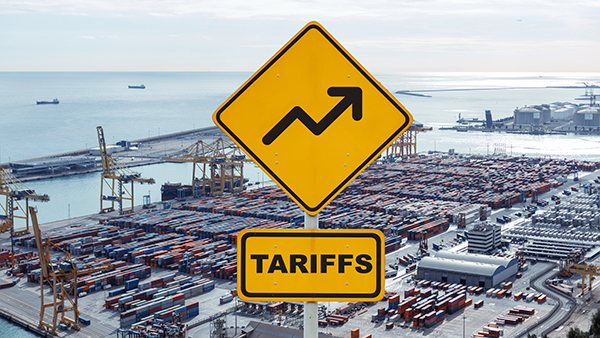Tariffs aim to bring manufacturing back—but without enough workers, the U.S. risks a revival with no one to power it.
By John Dorer, CEO EB3.work
U.S. tariffs are upending economic policy around the globe, but the end game is focused on bringing back manufacturing to American soil. It’s a familiar hope that certainly resonates; more American-made products should mean more American jobs. Policymakers in Washington are betting that tariffs will translate to reshoring of production operations, bolstering supply chains and even safeguarding national interests.
This sounds like a reasonable approach, but there’s one major problem: we don’t have the workers to fill existing manufacturing jobs, let alone new jobs created through a manufacturing resurgence.
More than a half-million manufacturing jobs, 622,000 to be precise, are sitting vacant thanks to a nationwide labor shortfall that stretches over multiple industries to the tune of 1.5 million unfilled positions. Many of these are in manufacturing, but other industries like logistics, construction, and hospitality have also been hit hard.
If we’re serious about rebuilding American manufacturing, we need to be just as serious about rebuilding the workforce that powers it. And right now, we’re not.
The labor crunch didn’t appear overnight—and it won’t resolve overnight, either. This is a crisis decades in the making, but it’s starting to be felt harder than ever by manufacturing executives. In fact, a recent survey shows that nearly 71% of executives worry about adding labor as tariffs boost U.S. manufacturing demand.
Baby boomers have long been the backbone of the American industrial workforce, but they are now retiring at a breakneck pace of 10,000 a day. Meanwhile, birth rates are faltering. Younger workers are fewer—and far less likely to choose manufacturing as a career path. In today’s labor market, desk jobs with predictable hours and remote options often win out over physical work on a factory floor.
The result? A widening gulf between the jobs available and the workers available—or willing—to take them.

There’s no doubt that tariffs and trade policy are reshaping how and where companies make things. Semiconductor facilities are springing up in Arizona. EV battery plants are breaking ground in the South. Federal incentives are pouring into U.S. infrastructure, aiming to reduce dependence on overseas suppliers.
As new factories rise, companies and economic developers are confronting a hard truth: capital investment is the easy part. Staffing is the challenge. And in too many regions, there just aren’t enough people ready—or nearby—to fill the roles being created.
Some projects are already seeing delays, not because of supply shortages, but because there’s no one to operate the machinery once it’s delivered.
Manufacturers aren’t sitting idle. They’re raising wages and offering signing bonuses. They’re even dangling perks like tuition reimbursement and free meals. While these are all important and positive moves, it’s not been enough.
The shortage of workers isn’t just about compensation. It’s about capacity—of skill, of geography, and of infrastructure. Given these realities, it’s no wonder 63% of manufacturers are “extremely concerned” about tariffs as a primary industry concern.
Today’s advanced manufacturing jobs often require technical training: robotics, automation, precision machining. But many would-be workers haven’t had access to that education. Others may be willing to move for the right job but can’t afford to relocate—or can’t find housing, childcare, or transportation in the new location.
Recruiting can only go so far if there aren’t enough workers in the system to begin with.
Compounding the challenge is the fact that many of the jobs Americans aren’t taking are being closed off to those who would.
Foreign-born workers currently make up nearly one in four manufacturing employees in the U.S. Yet immigration policy is tightening just as labor demand is surging. Mass deportation proposals and backlogged visa systems risk shrinking the available labor pool at exactly the wrong moment.
Programs like the EB-3 visa—designed to help companies fill permanent, full-time, entry-level roles—could be a lifeline. But as it stands, the process is slow, expensive, and opaque. Employers trying to do it right are left in limbo, while production timelines slip.
If we want to reshore jobs, we can’t shut out the very people who are ready and willing to fill them.
Another recent study found that the top four risks for manufacturers are 1) economic conditions, 2) attracting and developing talent, 3) labor availability, and 4) increases in labor costs. It’s clear that solutions must be nailed down sooner rather than later.
However, there’s no one fix for the manufacturing labor shortage. But there is a playbook for making progress—if we’re willing to treat workforce development like the national priority it is.
1. Make Investments in Current Workforce.
It’s critical to first focus on the workers that we have. Retention is much less costly to manufacturers than recruitment. Things like on-the-job training and clear paths to advancement are a great place to start. Providing more predictable schedules and support systems for care, transit, and housing can also help to turn the corner. Don’t think of these as perks. They’re infrastructure, plain and simple.
2. Grow Next Generation of Talent, Now!
Often a missed opportunity, partnering with high schools, community colleges, and trade schools to reintroduce young people to manufacturing is a terrific second step. Expanding apprenticeships can help to fill a pool of skilled workers for the future. Even things like summer internships, or hosting plant tours can improve interest in manufacturing careers. If we want to change minds, we need to show what today’s factory jobs really look like.
3. Modernize Pathways for Immigrant Workers.
A solid workforce strategy must include smart immigration policy. Streamlining of visa programs like the EB-3 visa would allow employers to responsibly fill roles that American citizens consistently refuse. Importantly, this isn’t about shortcuts—it’s about building a workforce that reflects the economic realities of today.
Tariffs may indeed push companies to bring more manufacturing operations back to American soil. But unless there’s more investment in people—in training, retention, and immigration—the promise of a manufacturing comeback will fall short.
We can’t outmaneuver this historic labor shortage with policy alone. If the U.S. wants to restore its industrial base, we need to solve the people problem first. Because no matter how many factories we build, nothing gets made without the workers inside.

About the Author:
John E. Dorer is an accomplished Global Mobility Executive with over 23 years of hands-on experience in the field. As the CEO of eb3.work, he leads an expert team of immigration attorneys and recruiters committed to solving the pervasive problem of entry-level labor shortages through employer-sponsored green card programs, particularly the EB-3 visa program.
Drawing upon an extensive background in global mobility, John has developed an unparalleled level of expertise in EB-3 staffing solutions. Under his leadership, eb3.work utilizes proprietary technology and streamlined processes to expedite the EB-3 application and approval procedures. The team delivers efficient, compliant results, making them a trusted partner for employers in a wide range of industries.
Passionate about solving labor shortage issues, John takes a dual-sided approach to his work. His primary mission is to partner with employers, assisting them in eliminating chronic entry-level labor shortages that hamper productivity and growth. Simultaneously, John is committed to creating meaningful employment opportunities for qualified foreign national workers, thereby contributing to the broader economic and social fabric of the country.
In this episode, I sat down with Beejan Giga, Director | Partner and Caleb Emerson, Senior Results Manager at Carpedia International. We discussed the insights behind their recent Industry Today article, “Thinking Three Moves Ahead” and together we explored how manufacturers can plan more strategically, align with their suppliers, and build the operational discipline needed to support intentional, sustainable growth. It was a conversation packed with practical perspectives on navigating a fast-changing industry landscape.